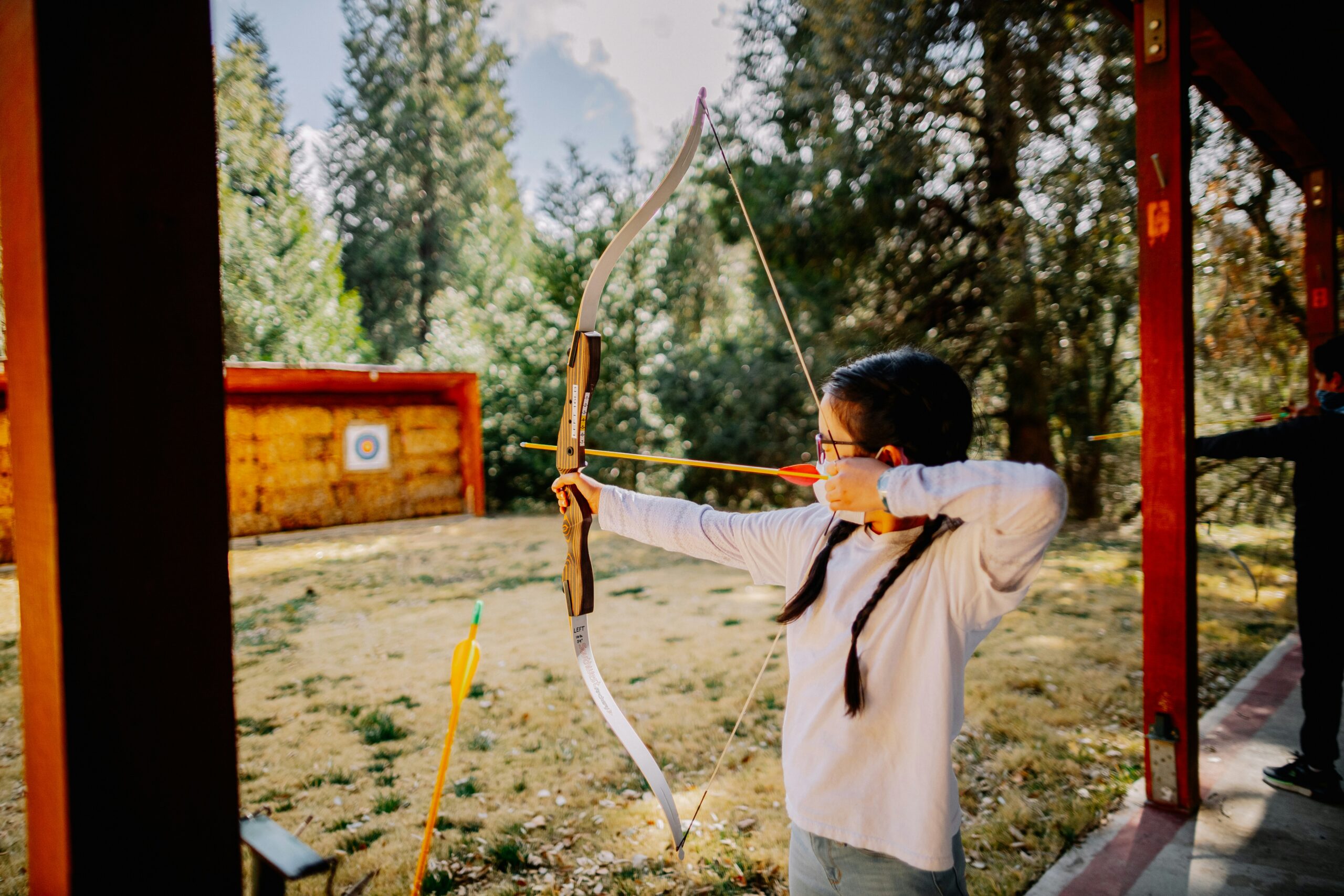Arrow Tag is quickly becoming a go-to activity for young players eager for a mix of fun, action, and learning. Combining the excitement of archery with the playfulness of tag, this game offers a safe and dynamic environment for children to explore. With foam-tipped arrows, kid-friendly rules, and engaging gameplay, it encourages both physical movement and mental agility. Whether indoors or outdoors, Arrow Tag helps children grow in confidence, coordination, and teamwork. It’s the perfect way to blend recreation with valuable developmental skills.
Key Takeaways
- Arrow Tag is safe, energetic, and suitable for children as young as six.
- Foam-tipped arrows and protective gear ensure a secure play experience.
- The game supports growth in motor skills, coordination, and teamwork.
- Creative themes and flexible rules keep kids engaged and learning.
- Proper supervision and a safe setup are essential for successful play.
Grasping the Fundamentals of Arrow Tag for Young Participants
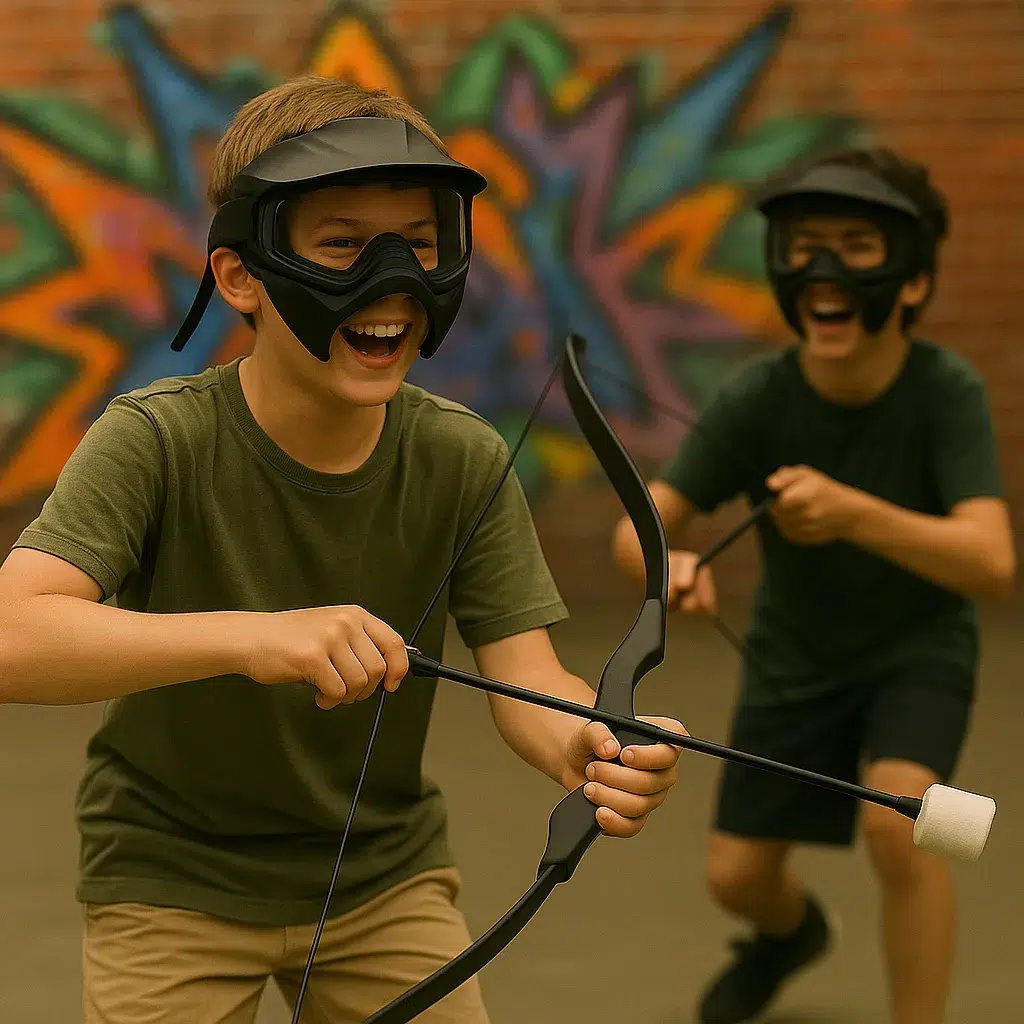
Arrow Tag is a fun, active game that blends archery and tag for a safe, engaging experience. It encourages physical movement, quick thinking, and team interaction, all while using soft foam-tipped arrows and lightweight bows. With clear rules and safety-first gameplay, kids get to enjoy energetic matches without the risks of traditional sports. The game structure keeps things interactive and exciting for all ages. It’s the perfect mix of fun and developmental play.
Defining What Arrow Tag Involves for Children
Arrow Tag introduces archery in a safe, kid-friendly way by allowing players to tag each other with foam-tipped arrows. Kids aim at targets on each other’s gear, encouraging precision and speed without causing harm. The rules are easy to follow, creating a familiar environment similar to classic playground games. Each match helps children develop social skills and physical coordination. The pace keeps them active and entertained. Safety equipment is always worn, including masks and arm guards. Overall, it’s a balanced blend of play and skill-building.
Recognizing the Developmental Advantages of Arrow Tag for Youth
This activity boosts multiple developmental areas while still feeling like play. Children improve their hand-eye coordination by aiming and shooting, while movement enhances balance and motor skills. Problem-solving comes into play during strategy planning, helping with cognitive growth. As kids play in teams, they practice communication and cooperation. Even shy children can build self-confidence by participating. Regular involvement also supports physical fitness in a fun, non-intimidating setting. It’s a full-body, full-brain experience that doesn’t feel like a chore.
How Arrow Tag Differs From Standard Archery Practices
Unlike traditional archery, which focuses on stationary target shooting, Arrow Tag is dynamic and interactive. Kids move around the arena, hide behind barriers, and aim at moving opponents. The arrows are soft and safe, removing the risk found in standard equipment. Instead of solo focus, gameplay revolves around group interaction and friendly competition. The sport eliminates intimidating aspects of archery through fun-themed rules. It’s much more fast-paced and suitable for short attention spans. Engagement comes from both teamwork and the thrill of movement.
Age Appropriateness for Starting Arrow Tag for Kids
Most children can begin playing around age six, though this depends on motor skill development. Games can be adapted for younger children with simplified objectives and smaller play zones. Older kids benefit from more complex rules that challenge their agility and planning skills. Parental guidance and staff supervision help tailor the experience to individual readiness. Everyone plays at their own pace, with equipment that’s suited to their size. The goal is safe, gradual progression without pressure. This flexible design makes Arrow Tag accessible to many.
Choosing Suitable and Secure Arrow Tag Gear for Children
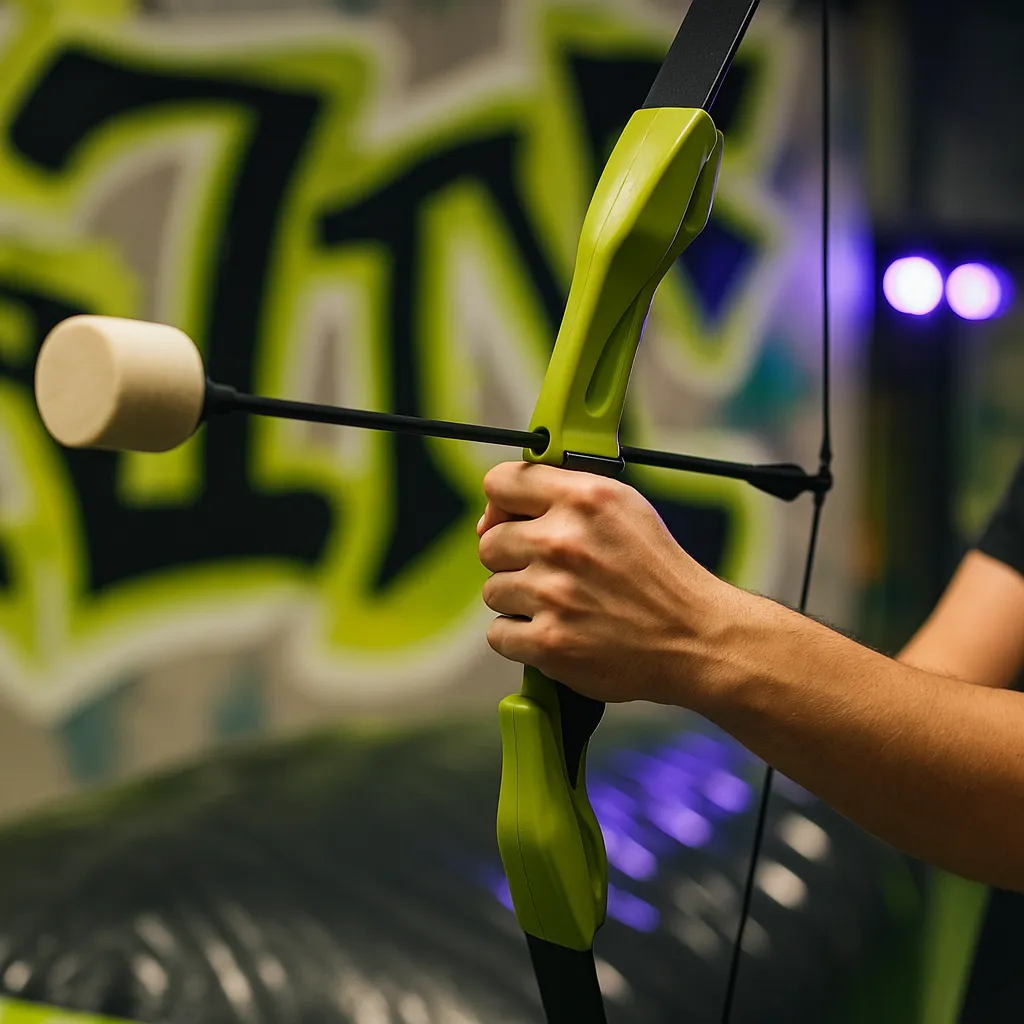
The right gear ensures both fun and safety during play. Bows, arrows, and protective items must match a child’s size and skill level. Foam-tipped arrows are standard to prevent injuries, and accessories like goggles and arm guards further reduce risk. Equipment should be easy to use and durable for active games. Whether buying or renting, all gear should meet safety standards. A well-equipped player has more confidence and a better experience overall.
Selecting Bows Matched to a Child’s Abilities
Bows for kids should be light, short, and have a low draw weight to avoid muscle strain. Youth models often include ergonomic grips and adjustable strings, making it easier for little hands to manage. These bows allow children to focus on form and aim without battling strength limitations. Sizing matters—an oversized bow can frustrate a young player. Staff often assist with fitting to ensure proper function. A good match boosts accuracy and fun. Getting the right bow is a simple but critical safety step.
Understanding the Safety Design of Foam-Tipped Arrows
These arrows have rounded, padded tips made from soft foam that absorb impact. They’re designed to bounce off gear and obstacles rather than cause harm. Children can safely play without worrying about injuries from hard points. The flexibility of the shafts helps prevent breakage and keeps the flying speed moderate. Foam tips also teach kids what it feels like to hit a target without pain. These safety elements make Arrow Tag accessible to all comfort levels. Equipment durability means fun stays consistent over time.
Must-Have Protective Items for Young Arrow Tag Players
Safety glasses shield children’s eyes from stray arrows or slips. Padded arm guards reduce bruises and help maintain proper bow posture. Some venues offer soft body armor or vests to cushion any direct hits. Gloves can prevent hand strain during long sessions. Kids are encouraged to dress in layers that cover exposed skin. Comfort and protection go hand in hand. Consistent gear checks help maintain safety. The more covered and comfortable the player, the more they can focus on fun.
Where to Obtain Arrow Tag Equipment for Kids
Local sporting goods stores often carry beginner archery kits for youth. Online retailers offer full sets with bows, arrows, and safety gear specifically designed for Arrow Tag. Some recreation centers provide rentals or guided sessions that include gear. Packages tailored to different age ranges make purchasing easier. Always look for gear with safety certifications and strong reviews. Choosing recognized brands helps ensure quality. Renting can also be a great way to test the waters before committing to full purchases.
Checking Equipment Before Starting Arrow Tag Activities
A quick inspection before play can prevent injuries. Make sure the bowstring isn’t frayed and arrows have intact foam tips. Goggles should be free of cracks, and the straps should be secure. Kids should test that the gear fits snugly without being too tight. Supervisors should clean gear regularly to avoid wear buildup. Even new equipment can have defects, so it’s worth double-checking. Small routines like these create a strong safety culture. Prevention is always easier than dealing with problems during a match.
Preparing a Safe Environment for Kids’ Arrow Tag Games
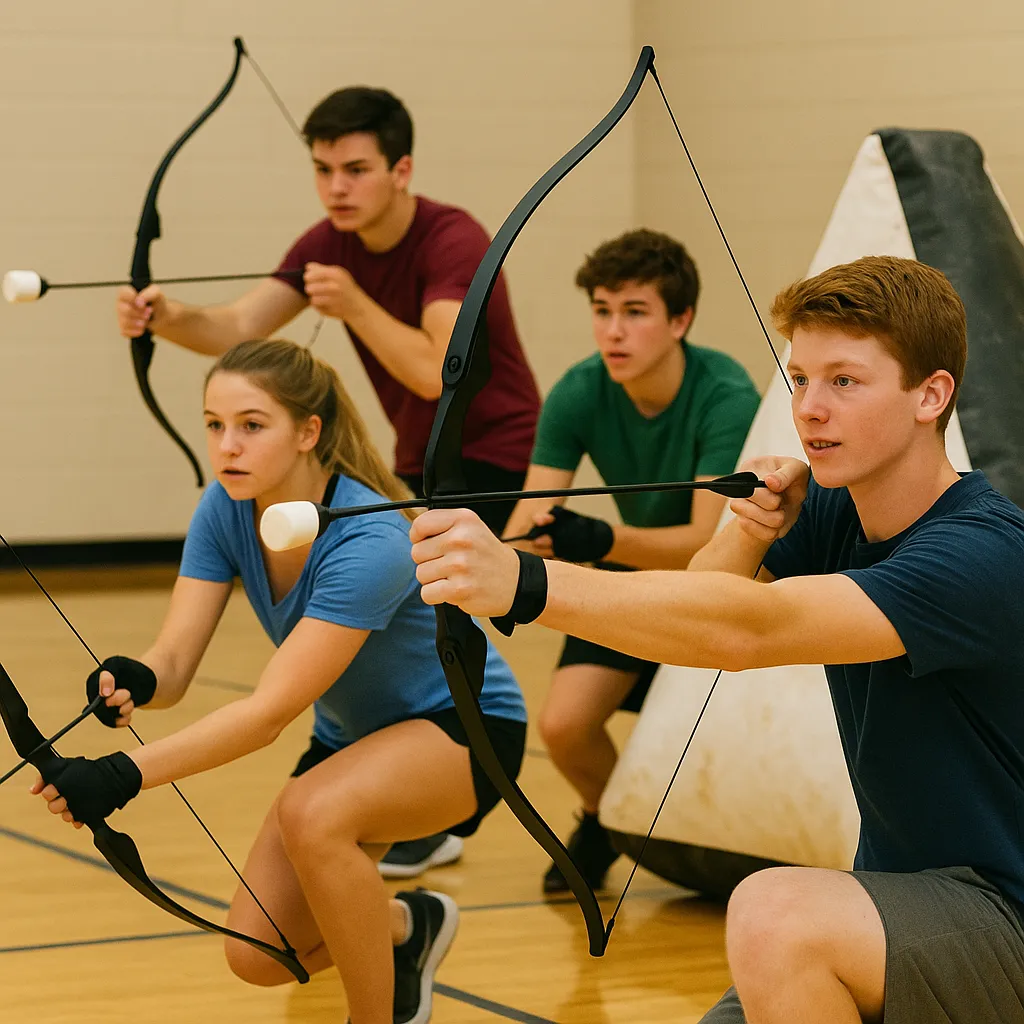
A secure play area is essential to keeping Arrow Tag enjoyable and injury-free. Whether indoors or outdoors, the space should support full mobility while eliminating sharp corners, breakables, and slippery surfaces. Bright lighting and visible boundaries add to clarity and focus. Soft barriers and controlled access points make the environment kid-friendly. The aim is to foster excitement without compromising safety.
Finding Appropriate Indoor or Outdoor Spaces for Play
Safe environments are key to a smooth game. Indoor venues with padded walls and high ceilings reduce the risk of injury. Outdoor areas should be flat, open, and cleared of rocks, branches, or debris. Sidewalks, hard surfaces, and cluttered spaces should be avoided. Playgrounds or gyms with soft flooring are ideal. Good airflow and lighting help maintain energy and visibility. Properly enclosed areas prevent stray arrows and distractions. The right setting makes all the difference in play quality.
Arranging Obstacles and Cover Points Securely
Soft barriers like foam blocks, inflatable structures, or gym mats add excitement and strategy to the game. These should be firmly anchored to prevent shifting mid-play. Even lightweight obstacles should withstand kids bumping or leaning on them. Symmetrical placement ensures balanced gameplay. Varying the heights and layouts keeps matches fresh and engaging. Organizers should avoid hard or sharp-edged items. Consistency across sessions helps build familiarity. Safe layout planning is as important as gear preparation.
Allocating Sufficient Room for Active Movement
Ample space allows kids to sprint, duck, and aim without feeling crowded. Removing clutter and obstacles from walkways prevents falls and collisions. A wide field or gym lets players try different strategies like flanking or hiding. Zones should be clearly marked to avoid confusion. Even teams require enough distance to reset safely between rounds. Smaller groups need at least one meter per player. Movement-heavy play thrives in open, obstacle-aware environments. A bit of room goes a long way.
Pre-Activity Safety Inspection of the Playing Zone
Before every game, an adult should walk through the space checking for hazards. Wet spots, loose objects, or improperly placed equipment can pose risks. Testing obstacle stability and reviewing exit access are also vital. This walkthrough helps prevent mid-game issues. Involving children in these checks builds their safety awareness, too. Everyone benefits from routine checks, and it sets the tone for responsible play. A few minutes of prep can mean hours of safe fun.
Weather Considerations for Outdoor Arrow Tag Fun for Kids
Outdoor play must be adjusted for environmental conditions. Avoid running games during heavy wind, extreme heat, or rain, as these conditions increase injury risk. Sun protection like hats and sunscreen may be needed on bright days. If the field becomes muddy or slippery, relocate the game or reschedule. Having a nearby indoor backup option is wise. Alerting parents in advance about the weather policy helps manage expectations. Flexible planning keeps playtime safe and stress-free.
Teaching Arrow Tag Regulations and Game Mechanics to Children
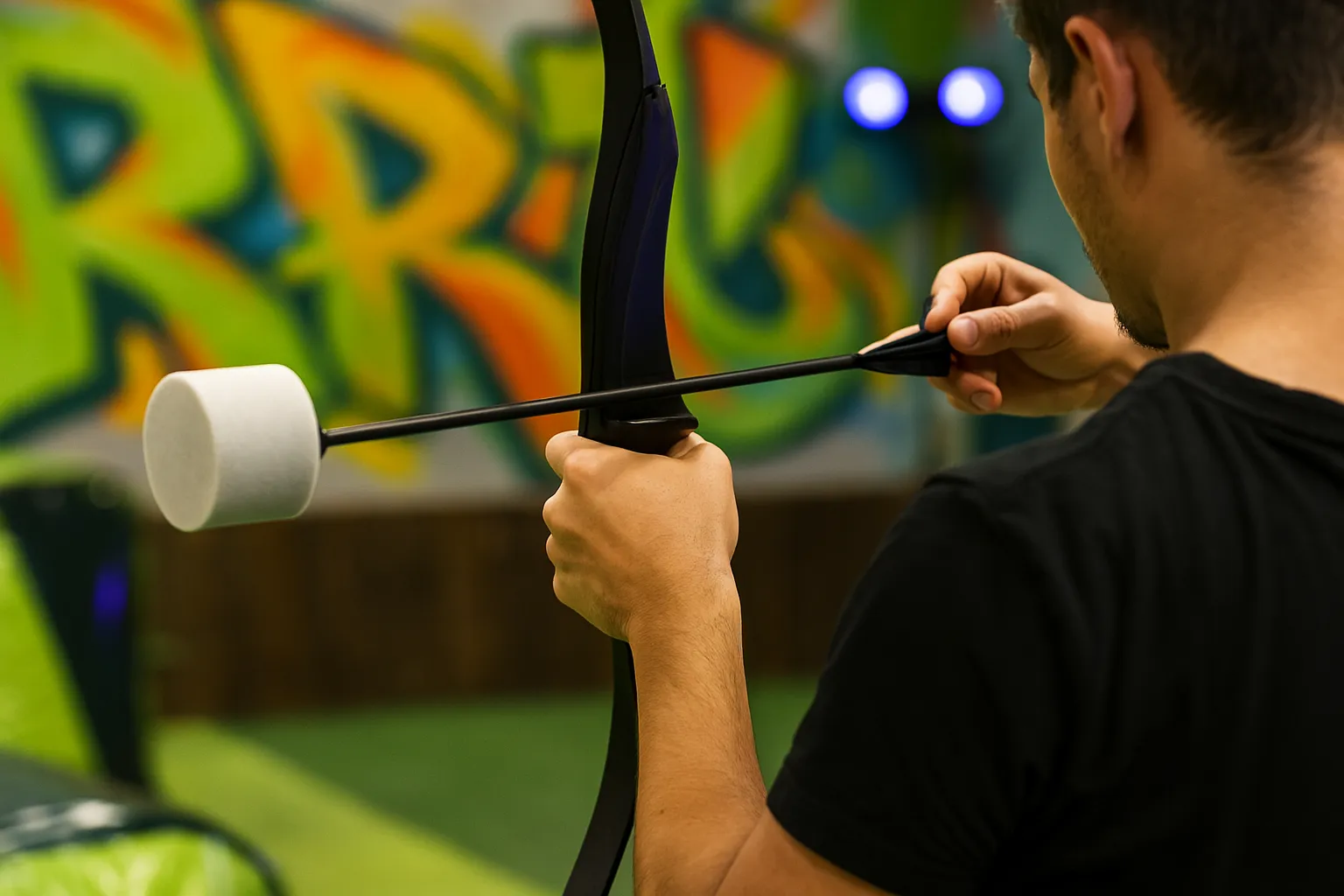
Understanding how the game works ensures everyone enjoys themselves safely. Simple rules, clear objectives, and consistent enforcement build respect for the game. Visual cues and active instruction support all learning styles. Introducing rules step-by-step reduces overwhelm. By making gameplay easy to follow, kids can focus on having fun and staying active without confusion or frustration.
Essential Rules for Enjoyable Kids’ Arrow Tag Sessions
Basic rules should be explained before each match. Players must only shoot at designated gear targets and follow “stop” commands immediately. Contact, rough play, or throwing equipment should be discouraged. Each session starts with a brief rules recap. Rule posters or visual reminders can help younger players remember. Referees should intervene quickly but gently when rules are broken. Keeping things structured ensures fairness. A consistent rule set sets a fun and respectful tone.
Instructing Basic and Safe Shooting Methods
Begin by teaching the stance: feet shoulder-width apart and knees relaxed. Demonstrate how to nock the arrow, aim using the bow sight, and release smoothly. Instructors should emphasize aiming low and never pointing at faces. Children practice on stationary foam targets before starting matches. Repetition builds muscle memory and comfort. Slow-motion demos can help with tough techniques. Coaches should walk the floor during drills. Reinforcing safety keeps confidence high and injuries low.
Easy Game Variations for Novice Young Players
Beginners benefit from slower-paced modes like target tag, freeze tag with bows, or guided obstacle courses. These activities limit complexity while reinforcing accuracy and movement. Team leaders can help direct new players during their first rounds. Shorter games reduce fatigue and give more chances to reset. Creative twists like themed rounds or scavenger hunts keep things lighthearted. The focus should remain on skill-building, not winning. Friendly play keeps interest high and stress low.
Promoting Sportsmanship and Fair Conduct in Arrow Tag for Kids
Before games start, talk about teamwork, honesty, and respect. Praise players who help others or stay calm under pressure. Encourage high-fives and cheering between teams. Remind kids that it’s okay to lose as long as everyone tries their best. Coaches can lead short debriefs to discuss what went well. Public shoutouts for kind behavior reinforce the message. Respect builds stronger teams and safer games. Teaching grace in defeat and humility in victory is priceless.
Communicating Signals and Game Procedures Clearly
Use consistent hand signals for starting, pausing, and ending games. Whistles or verbal cues like “Freeze!” can reinforce rules during active rounds. Coaches should review all signals before play begins. Colored flags or cones help show boundaries and safe zones. Roleplay practice rounds where kids respond to signals can reinforce their meaning. Clarity avoids chaos and confusion. The goal is to ensure that even young players understand and react quickly.
Frequently Asked Questions
What age is best to start playing Arrow Tag?
Children can begin playing Arrow Tag as early as six, depending on their coordination and maturity level. With lightweight gear, simplified rules, and close supervision, younger players can safely enjoy the game while developing essential motor and social skills.
How do foam-tipped arrows ensure safety?
Foam-tipped arrows are designed to absorb impact, greatly minimizing the risk of injury during play. They provide enough tactile feedback to make the experience exciting without causing harm, making them ideal for younger or first-time players.
Can Arrow Tag be played indoors as well as outdoors?
Yes, Arrow Tag is flexible enough for both indoor and outdoor settings. As long as the space is clear of hazards, allows for safe movement, and is properly supervised, kids can enjoy the game in gyms, backyards, or designated play arenas.
What should be included in a safety inspection of the play zone?
A proper inspection should look for loose objects, slick surfaces, sharp edges, or unstable obstacles. Equipment should be checked for damage or wear, and the space should allow safe entry, exit, and movement for all players.
How can theme-based games enhance Arrow Tag fun?
Themes like jungle quests or space missions make gameplay more immersive and engaging for kids. They add excitement while encouraging teamwork and creativity, all within a structure that reinforces safety and rule-following.
Conclusion
Arrow Tag for kids offers much more than just physical fun—it’s a well-rounded activity that nurtures development, boosts confidence, and encourages social interaction in a playful setting. With the right equipment, clear rules, and thoughtful supervision, children can enjoy thrilling sessions full of laughter, learning, and active exploration. Whether you’re planning a home setup or visiting a recreational facility, Arrow Tag is a memorable experience that delivers on both safety and excitement.

